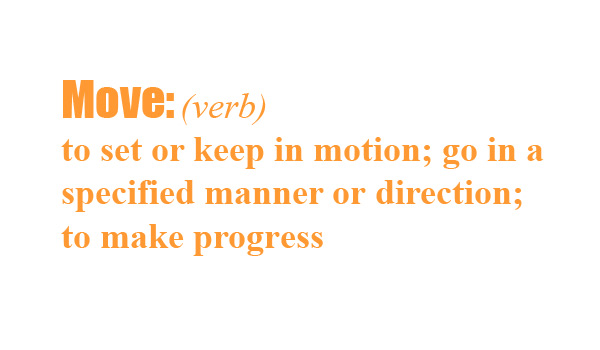New Year Goals: Run Round the Bays!
A great way to achieve New Year resolutions is by setting a realistic short-term goal. Rather than saying “I want to get fit” or “I want to lose weight”, write down a goal with a finite period for example,
“In 8 weeks I would like to be able to the run the Round the Bays event without stopping”.
I see too many people leave Round the Bays training too late (if at all!) and try to train in as little as 3-4 weeks before the event, occasionally with predictable running injuries as a consequence.
Entering an event such as the Round the Bays gives you many benefits:
“In 8 weeks I would like to be able to the run the Round the Bays event without stopping”.
I see too many people leave Round the Bays training too late (if at all!) and try to train in as little as 3-4 weeks before the event, occasionally with predictable running injuries as a consequence.
Entering an event such as the Round the Bays gives you many benefits:
11/01/2013
No doubt with the over indulgence at Christmas and the arrival of 2013 many of you have set New Years Resolutions like getting healthy, getting fit or losing weight.
A great way to achieve these New Year resolutions is by setting a realistic short-term goal. Rather than saying “I want to get fit” or “I want to lose weight”, write down a goal with a finite period, for example,
“In 8 weeks I would like to be able to the run the Round the Bays event without stopping”.
I see too many people leave Round the Bays training too late (if at all!) and try to train in as little as 3-4 weeks before the event, occasionally with predictable running injuries as a consequence.
Entering an event such as the Round the Bays gives you many benefits:
Round the Bays is on March 10 this year. Now is the best time to enter Round the Bays and start light ‘easy’ training to leave enough time to intensify your running training in the 4 weeks before the race.
Here are 5 training tips to completing Round the Bays injury free:
You can hop on the Round the Bays website www.roundthebays.co.nz for a general training schedule to help you along.
If you have any questions about your fitness training, are running after an injury or have current injuries please feel free to call me.
Meanwhile, I hope you’re getting outdoors and enjoying the warmer weather this summer.
A great way to achieve these New Year resolutions is by setting a realistic short-term goal. Rather than saying “I want to get fit” or “I want to lose weight”, write down a goal with a finite period, for example,
“In 8 weeks I would like to be able to the run the Round the Bays event without stopping”.
I see too many people leave Round the Bays training too late (if at all!) and try to train in as little as 3-4 weeks before the event, occasionally with predictable running injuries as a consequence.
Entering an event such as the Round the Bays gives you many benefits:
- You now have a real reason to get started, which keeps you motivated through your running training.
- You are now able to focus your training towards achievement: completing Round the Bays.
- An incremental measurement of your success that you can celebrate. Use training for Round the Bays to improve for future running events.
- Getting fitter, trimmer and healthier without directly thinking about it!
- Being fitter and the change to a healthier lifestyle helps you long-term to keep fit and healthy by increasing natural energy levels and reducing cravings for unhealthy food, in all helping you to lose weight and keep it off.
Round the Bays is on March 10 this year. Now is the best time to enter Round the Bays and start light ‘easy’ training to leave enough time to intensify your running training in the 4 weeks before the race.
Here are 5 training tips to completing Round the Bays injury free:
- WARM UP. Start with a walk or slow jog 3-5 minutes before running to get blood circulation into your leg muscles and get your lungs prepared for exercise.
- TAKE IT EASY. ‘Time on your feet’ is better than ‘running to time’ in the initial stages. If it has been a long time since you have performed any running start simply by repeating a few sessions of 5 minutes running, followed by 5 minutes walking.
- BUILD UP SLOWLY. Gradually increase the length of time you can run over the first few weeks running at conversation pace (the pace you can hold a conversation while still running). Within 3-4 weeks you may be able to run 20-30 minutes easily. Forget about trying to beat last weeks time it took to “run around the block”. This is the easiest way of causing running injuries. 2-3 weeks before race day, you will be able to intensify your training sessions with less risk of injuries.
- REST. Warm down exercises are great after a workout – walk for 3-5 minutes to remove lactic acid from your tired muscles followed by 30 second stretches for your calves, hamstrings and quadriceps afterwards. Rest days after running days are important to allow your body to recover in order to absorb the training and actually get fitter.
- EAT HEALTHIER. Make small changes to your diet like eating smaller portions and substituting fatty components for something healthier.
You can hop on the Round the Bays website www.roundthebays.co.nz for a general training schedule to help you along.
If you have any questions about your fitness training, are running after an injury or have current injuries please feel free to call me.
Meanwhile, I hope you’re getting outdoors and enjoying the warmer weather this summer.

